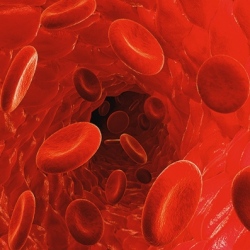
Stanford investigators have reported success in an early-phase clinical trial examining the safety, tolerability and feasibility of administering infusions of blood plasma from young donors to participants with mild to moderate Alzheimer’s disease.
There were also some signs suggesting improvements in participants’ conditions.
Above – Sharon Sha presented findings Nov. 4 from a small clinical trial that found administering blood plasma from young donors to people with mild to moderate Alzheimer’s disease was safe. Paul Sakuma
Finding of safety wasn’t surprising, given that blood-plasma infusions have long been in widespread use for other indications and are considered extremely safe. More surprising, she said, were hints of recipients’ improvement on tests of functional ability: the capacity to perform basic tasks essential to independent daily life, such as remembering to take medications and being able to pay bills and prepare one’s own meals.
The PLASMA trial was designed to test a hypothesis advanced by Tony Wyss-Coray, PhD, Stanford professor of neurology and neurological sciences and a senior research career scientist at the Veterans Affairs Palo Alto Health Care System, whose research has shown that factors in the blood of young mice can rejuvenate the brain tissue and improve cognitive performance in old mice.
Sha, the clinical core co-leader of the Stanford Alzheimer’s Disease Research Center and the medical director of the Stanford Neuroscience Clinical Trials Group, cautioned that these assessments were based on caregiver reports and that the number of participants in the study — 18 — was small. Further studies on larger numbers of participants will be necessary before conclusions about efficacy can be reached, Sha said.
Improvements in functional ability
An analysis of assessments once all participants had been treated showed no significant changes in participants’ mood or their performance on tests of cognition involving tasks such as memorizing lists or recalling recent events, Sha said. These kinds of changes are typically observed only in clinical trials whose durations exceed one year, she added, so the absence of an effect here wasn’t particularly unanticipated.
But on two of three different assessments of functional ability, participants showed statistically significant improvement — this, despite the trial’s small size.
“That was surprising, to me,” said Sha. “The trial wasn’t powered to show efficacy.”
At first, the investigators suspected that the report of improvements in functional ability might have been driven by the second group of participants, who along with their caregivers and the investigators themselves knew they were getting plasma; this could perhaps predispose caregivers to optimistic reporting. But examination of the data indicated that, to the contrary, it was the first group of participants — who had no idea whether they were getting plasma or placebo — who showed the most improvement in functional ability after receiving plasma infusions.
